Related Research Articles

Photonics is the physical science and application of light (photon) generation, detection, and manipulation through emission, transmission, modulation, signal processing, switching, amplification, and sensing. Though covering all light's technical applications over the whole spectrum, most photonic applications are in the range of visible and near-infrared light. The term photonics developed as an outgrowth of the first practical semiconductor light emitters invented in the early 1960s and optical fibers developed in the 1970s.
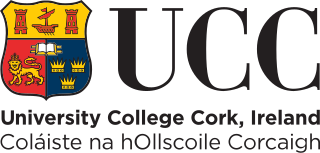
University College Cork – National University of Ireland, Cork (UCC) is a constituent university of the National University of Ireland, and located in Cork.
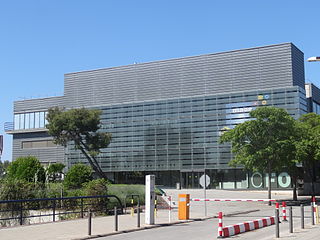
ICFO – The Institute of Photonic Sciences is a research center devoted to the science and technology of light. Located in Castelldefels, ICFO was created in 2002 by the Government of Catalonia and the Technical University of Catalonia.
Nanoelectronics refers to the use of nanotechnology in electronic components. The term covers a diverse set of devices and materials, with the common characteristic that they are so small that inter-atomic interactions and quantum mechanical properties need to be studied extensively. Some of these candidates include: hybrid molecular/semiconductor electronics, one-dimensional nanotubes/nanowires or advanced molecular electronics.

The Ferdinand-Braun-Institut, Leibniz-Institut für Höchstfrequenztechnik (FBH) is a research institute, which is a member of the Gottfried Wilhelm Leibniz Scientific Community. The institute is located in Berlin at the Wissenschafts- und Wirtschaftsstandort Adlershof (WISTA), its research activity is applied science in the fields of III-V electronics, photonics, integrated quantum technology and III-V technology
Photonics and Nanostructures: Fundamentals and Applications is a peer-reviewed scientific journal, published quarterly by Elsevier. The editors-in-chief are A. Di Falco University of St Andrews, M. Lapine University of Technology Sydney, P. Tassin Chalmers University of Technology, M. Vanwolleghem Centre National de la Recherche Scientifique (CNRS), Villeneuve-d'Ascq, L. O'Faolain Cork Institute of Technology.
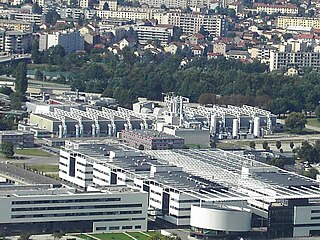
CEA-Leti is a research institute for electronics and information technologies, based in Grenoble, France. It is one of the world's largest organizations for applied research in microelectronics and nanotechnology.
Donal Donat Conor Bradley,, is the Vice President for Research at King Abdullah University of Science and Technology (KAUST), Saudi Arabia. From 2015 until 2019, he was head of the Mathematical, Physical and Life Sciences Division of the University of Oxford and a Professor of Engineering Science and Physics at Jesus College, Oxford. From 2006 to 2015, he was the Lee-Lucas Professor of Experimental Physics at Imperial College London. He was the founding director of the Centre for Plastic Electronics and served as vice-provost for research at the college.
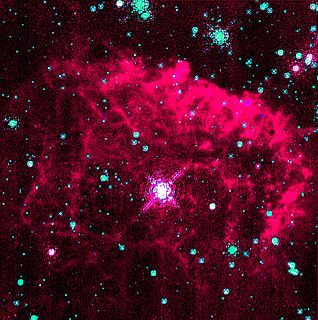
The Center for Detectors (CfD) is a Rochester Institute of Technology College of Science academic research center. The CfD, established in January 2010 by Dr. Donald Figer, began as an expansion of the Rochester Imaging Detector Laboratory. Its mission is to enable scientific discovery, national security, better living, and commercial innovation through the design and development of advanced photon detectors and associated technology.
Adrian (Mihai) Ionescu is a full Professor at the Swiss Federal Institute of Technology in Lausanne (EPFL).
The Intel Outstanding Researcher Award is presented by Intel Corporation for outstanding contributions to the development of advanced nanoelectronic and manufacturing technologies. The award was created to recognize truly outstanding contributions by researchers funded by Intel’s Corporate Research Council and associated Strategic Research Sectors (SRSs) and the inaugural awards were announced during 2012. In selecting the award winners, careful consideration is given to the fundamental insights, industrial relevance, technical difficulty, communications and potential student hiring associated with a candidate's research program.
The IEEE International Electron Devices Meeting (IEDM) is an annual micro- and nanoelectronics conference held each December that serves as a forum for reporting technological breakthroughs in the areas of semiconductor and related device technologies, design, manufacturing, physics, modeling and circuit-device interaction.
Valipe Ramgopal Rao is the Director of the Indian Institute of Technology, Delhi. He was a P.K.Kelkar Chair Professor in Department of Electrical Engineering, Indian Institute of Technology Bombay and is now also the Director at IIT Delhi. Ramgopal Rao has more than 475 publications in various journals, and 49 patents in the areas of Electron devices and Nanoelectronics. Ramgopal Rao was the first elected chairman for the Indian Section of the American Nano Society. He is also the recipient of multiple prizes including the Swarnajayanti Fellowship Shanti Swarup Bhatnagar Prize, Infosys Prize, Techno-Visionary award from the Indian Semiconductor Association in 2020, the IBM faculty award in 2007 and the IEEE EDS Education award in 2020 besides many others. He is a Fellow of IEEE, Fellow of the Indian National Academy of Engineering (INAE), Indian Academy of Sciences (IASc), National Academy of Sciences (NASI) and the Indian National Science Academy (INSA).
Eoin P. O’Reilly is an Irish physicist who, as of 2014, was chief scientific officer at the Tyndall Institute, and a professor of physics at University College Cork. In 2014 he was awarded the Rank Prize in Optoelectronics for his pioneering work on strained-layer laser structures.
Multi-Scale Multidisciplinary Modeling of Electronic Materials (MSME) Collaborative Research Alliance (CRA) was a research program in the United States that was initiated and sponsored by the US Army Research Laboratory (ARL). The objective of the program was “to develop quantitative understanding of materials from the smallest to the largest relevant scales to advance the state of the art in electronic, optoelectronic and electrochemical materials and devices.”

Munster Technological University or MTU is a multi-campus technological university (TU), consisting of six campuses in Cork and Kerry. The university was established in January 2021, the result of a merger between two institutes of technology, Cork Institute of Technology and IT Tralee. Its creation was announced in May 2020. It accommodates more than 18,000 students and over 2,000 members of staff.
Ann B. Kelleher, from Knockraheen, Carriganima near Macroom, County Cork, is an engineer, and a senior officer of Intel Corporation. She leads Intel's Technology Development Team, focused on developing 5 nm and 7 nm process technology. She reports to Intel's CEO, Pat Gelsinger. She was the first Irish woman to be named as a vice-president of the corporation.
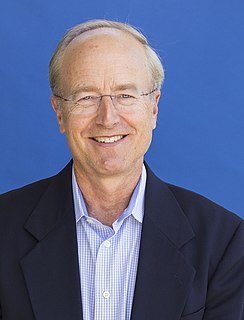
John E. Bowers is an American physicist, engineer, researcher and educator. He is the Fred Kavli Chair in Nanotechnology, the director of the Institute for Energy Efficiency and a distinguished professor in the Departments of Electrical and Computer Engineering and Materials at University of California, Santa Barbara. He is also the deputy director of American Institute of Manufacturing of Integrated Photonics.

Niels Quack is a Swiss and German engineer specialized in optical micro engineering. He is a SNSF professor at EPFL and director of the Photonic Micro- and Nanosystems Laboratory at its School of Engineering.
References
- ↑ "The Tyndall National Institute, UCC leads high tech future". www.ucc.ie. 20 May 2011. Retrieved 2019-11-14.
- ↑ "John Tyndall's blue sky apparatus". www.rigb.org. retrieved 2019-11-14
- ↑ "Our scientific genius Tyndall who was accidentally murdered by his wife". www.irishexaminer.com. December 4, 2013. retrieved 2019-11-14
- ↑ "John Tyndall - Science Communicator". retrieved 2019-11-14
- 1 2 3 4 "Tyndall National Institute - History". www.tyndall.ie. retrieved 2019-11-14
- ↑ Hogan, Dick. "NMRC extension in Cork is opened". The Irish Times. retrieved 2019-11-14
- ↑ https://www.tyndall.ie/facility-description Tyndall.ie retrieved 2/10/2019
- ↑ https://www.ucc.ie/en/research/news-events/news/tyndall-to-progress-major-expansion-under-the-governments-national-development-plan.html UCC.ie retrieved 2/10/2019
- 1 2 3 https://www.irishexaminer.com/breakingnews/business/tyndall-national-institute-secures-additional-8m-in-eu-funding-948381.html Irishexaminer.com retrieved 2/10/2019